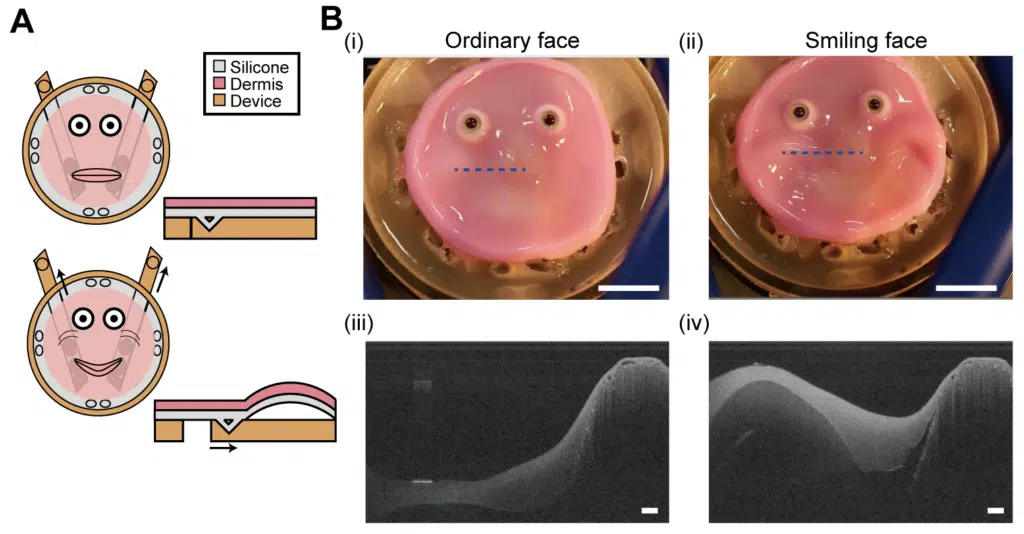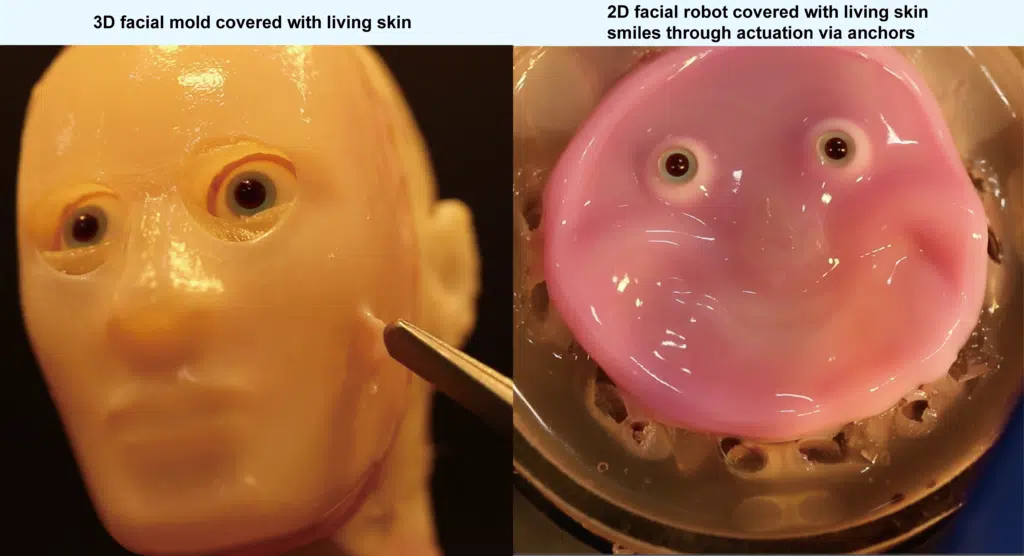Scientists attached lab-grown skin to robots and it’s as terrifying as you’d imagine
- Scientists have bonded a human-like, lab-grown skin to robots
- The team used a new technique to fix the ‘skin’ to the robot enabling them to perform facial expressions
- Researchers say it could have many benefits for robots
Published on Jun 27, 2024 at 7:38 AM (UTC+4)
by Claire Reid
Last updated on Jun 28, 2024 at 1:29 PM (UTC+4)
Edited by
Tom Wood
Scientists applied a human-like, lab-grown skin to robots giving them increased mobility to perform facial expressions.
A team of researchers, led by Professor Shoji Takeuchi of the University of Tokyo, discovered a way to create this human-like skin and to bond it onto the ‘faces’ of robots.
This left the bots with a thin layer of artificial – yet oddly realistic – looking skin.
While it may sound – and look – like something from a dystopian science-fiction movie, researchers say it could have potentially big benefits for robots.
READ MORE! Researchers create humanoid robot so advanced it can predict when you are going to smile
The new skin bonding techniques could be useful for robotics

According to the team, this specially-bonded ‘skin’ could lead to ‘increased mobility, self-healing abilities, embedded sensing capabilities, and an increasingly lifelike appearance’. We’re not sure that the last one is a benefit, but there we are.
The creator also thinks the research could be useful in the cosmetics industry and help train plastic surgeons
Takeuchi is a pioneer in biohybrid robotics and has previously 3-D printed lab-grown meat; designed and created small robots that can walk using biological muscle tissue; and engineered skin that can heal.
He began this latest project following previous research where he felt the bonding methods for the fake skin weren’t quite up to scratch.
For this study, Takeuchi attempted to mimic human skin-ligament structures and used specially made V-shaped perforations in the robots to bind them with the aid of a special collagen gel.
Researchers were able to replicate human facial structure

“In this study, we managed to replicate human appearance to some extent by creating a face with the same surface material and structure as humans,” Takeuchi said in a press release.
“Additionally, through this research, we identified new challenges, such as the necessity for surface wrinkles and a thicker epidermis to achieve a more humanlike appearance. We believe that creating a thicker and more realistic skin can be achieved by incorporating sweat glands, sebaceous glands, pores, blood vessels, fat and nerves.
“Of course, movement is also a crucial factor, not just the material, so another important challenge is creating humanlike expressions by integrating sophisticated actuators, or muscles, inside the robot.
“Creating robots that can heal themselves, sense their environment more accurately and perform tasks with humanlike dexterity is incredibly motivating.”
The research comes as Tesla boss Elon Musk has suggested the world may one day be filled with 20 billion humanoid robots.
But, surely, now the big question is – will they be covered in lab-grown skin?

Claire Reid
Claire Reid is a journalist who hails from the UK but is now living in New Zealand. She began her career after graduating with a degree in Journalism from Liverpool John Moore’s University and has more than a decade of experience, writing for both local newspapers and national news sites. Across her career she's covered a wide variety of topics, including celebrity, cryptocurrency, politics, true crime and just about everything in between.




